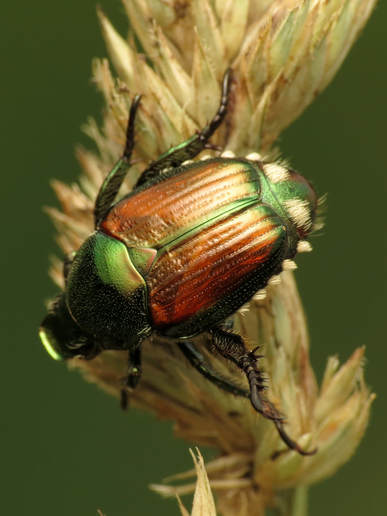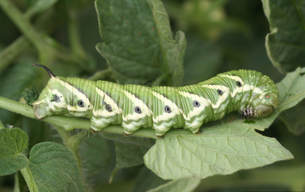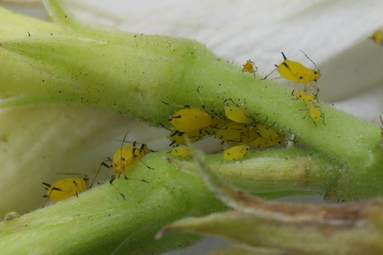 This is a Q&A blog series on healthy organic turf. If you have a question for Good Sweet Earth's lawn guy, Steve, shoot him an email at [email protected], and include "Ask the Lawn Guy" in the subject line. Most people know what sandy soil and clay soil look like. They know that sandy soil is pretty loose and doesn't hold water very well. They know that clay soil can often feel hard and compacted. Most people also also know that nothing grows especially well in soil that's either of these two things. Somewhere in between sand particles and clay particles lies silt. Loam soil contains a balance of all three types of particles. So the question that I got recently was this: "How much sand should I add to my clay soil to loosen it up and make it usable?" And I suppose the counterpart to this question could be "How much clay should I add to sandy soil?" In short, the answer is: Don't bother. You'll make your soil even worse by trying to change its structure with sand or clay. Imagine your clay particles as marbles. Proportionally speaking, silt would be about the size of a basketball compared to those marbles. Now I had a hard time coming up with a real-world object that would be representative of a sand particle next to our marble-sized clay particle. The best I could come up with is this: Picture a ball slightly larger than a three-car garage. Yep. That's a sand particle next to a clay particle. Now imagine you had a field full of marbles. And you want to "loosen" things up. I don't care how many three-car garages you add to that field of marbles, you're never, ever going to end up with a field full of basketballs. You're just gonna have a bunch of really small balls and really large balls, and they're not going to work together for anyone's good because you're never going to have enough garage-balls to balance the little marbles. Ideally, healthy soil is equal parts marbles, basketballs and three-car garages. But getting that balance is so much harder than it sounds. I don't recommend attempting to change the mineral structure of your soil this way. So what is a clay-burdened or sand-burdened gardener to do? Two words: Organic matter. Clay-heavy soil has a very difficult time getting air through its tiny, tightly-bound particles. Roots also have a hard time moving through them. Organic matter, like compost or organic fertilizers, changes everything. This is the answer you seek, not sand. Mix that organic matter into your clay soil or top-dress it. Adding organic matter will make your clay soil usable in a way that adding sand never will. Likewise, if you're dealing with sandy soil (an especially common problem if you live by the Lake Michigan lakeshore), adding organic matter will help your soil retain water and nutrients so much better. Types of organic matter that you can add to your soil to make it healthier include basic compost (that many gardeners make in their own backyards), Worm Compost or Alfalfa Meal. Biochar (mixed with some sort of composted material) also makes for a terrific soil amendment. For really compacted clay soil, gypsum is a good, natural option for de-compacting it before adding organic matter. For compacted lawns with clay soil, aeration is a good option, best done in the fall, followed by a top-dressing of organic matter and/or gypsum.
0 Comments
 The website, Your Green Pal, has a great list of things you should have on-hand as the weather begins to warm and your yard starts to grow again. Best of all, their list is free of synthetic chemicals, so if you're going the organic route in your yard, this list is a must-read. Click here for their 2019 Spring Cleaning Buyers Guide. We also appreciate their including Good Sweet Earth on their list of things to purchase in the spring (#5: Soil additives from Good Sweet Earth). We didn't ask to be included, but we sure appreciate the shout out on a national website!  This is the third story in a three-part series on how to deal with garden pests chemical-free. Garden pests—we all get them, but how do you deal with the pests without spraying chemicals on your food? No worries we are here to help! The final pesky garden pest we'll discuss are Japanese Beetles. I hate to say it, but Japanese Beetles are actually quite beautiful, with blue-green heads and copper backs. These small beetles are about a half inch long, travel in groups, and eat almost any plant. Favorite feasts for this pest include roses, beans, and raspberries. Japanese beetles start out as grubs in your soil then emerge in June as adult beetles. As grubs, they destroy the roots of your grass before coming to the surface to then attack your plants. While their adult life is only 40 days, they can easy destroy your garden if left unchecked. So what is a chemical free gardener to do? Luckily you have quite a few options! I seem to deal with Japanese Beetles every season since moving to West Michigan. Even if you do not have grubs in your soil the Japanese Beetles can easily fly over from your neighbor’s yard. Row covers are quite effective in protecting plants if used during the beetles life cycle. If covering your crops isn't your game, hand picking the beetles in the morning when they are most active is quite easy, as they are quite slow. As I catch the pests, I put them into a bowl of water. If you have chickens, your feathered friends will enjoy the treat. If you are not going to feed the beetles to another animal add dish soap to the water so they cannot fly away. When handpicking just isn’t enough you can spray your plants with Neem Oil. I spray my roses with Neem Oil since handpicking around the thorns isn’t practical. If you see Japanese Beetles in your garden don’t stress! You are now armed with a plan of attack to save your season. Happy gardening!  This is the second in a series on how to deal with garden pests chemical free. Garden pests—we all get them, but how do you deal with the pests without spraying chemicals on your food? No worries we are here to help! One fine summer morning I strolled out to my garden only to find my tomato plants nearly half eaten. The tomato hornworm strikes again. Easily identifiable the plump bright green with white and black markings the tomato hornworm (also known as the tobacco hornworm) can destroy a tomato plant in a no time at all. If you find one be assured, there are others lurking nearby. Especially check the underside of leaves and the stems of your plants to find these pests. So what is a chemical free gardener to do? Handpicking is the best organic solution to these pesky caterpillars. Simply pluck them off and either crush or drop into a bucket of soapy water. Don’t be alarmed by the fierce horns the tomato hornworm displays they cannot pinch, bite or attack you. One way to prevent tomato hornworms from ever striking is tilling your soil as this kills larvae before they become the dreaded caterpillars. Another method is to plant marigolds, basil or dill to deter these pests from entering your garden. Finally, a product called Bacillus Thuringiensis is great for killing caterpillar-stage insects. Happy gardening!  This is the first in a series on how to deal with garden pests chemical free. Garden pests—we all get them, but how do you deal with the pests without spraying chemicals on your food? No worries, we are here to help! The first garden pests we’ll deal with are aphids. Aphids also come in variety of colors ranging from bright green to brown or even pink. These little buggers are so small, sometimes you cannot even see them on your plants. So how do you know they are there? The leaves of your plants will begin to curl and turn yellow. The plants will also feel sticky and ants will be attracted to this sticky substance. For a pest so small, they can cause a lot of damage on your young plants as well as your established plants. They feed on plant juices by attacking leaves, stems, flowers, buds and even the roots. Basically they will suck your plant dry potentially killing if left untreated. So what is a chemical free gardener to do? Luckily you have quite a few options! A few seasons ago the Good Sweet Earth garden was attacked full force by aphids. I promptly ordered a slew of ladybugs. The beneficial ladybug feeds on aphids and controls the population. After a few days I didn’t see any aphids or ladybugs, but thankfully the ladybugs come back each season. While waiting on the ladybugs in the mail I blasted my plants with cold water and also used a mix of soapy water to spray on the bottom of the leaves. Dusting your plants with flour can also deter aphids. Finally, Neem Oil is a great option for knocking out aphids. If you see aphids or suspect aphids in your garden don’t stress! You are now armed with a plan of attack to save your season. Happy gardening! |
